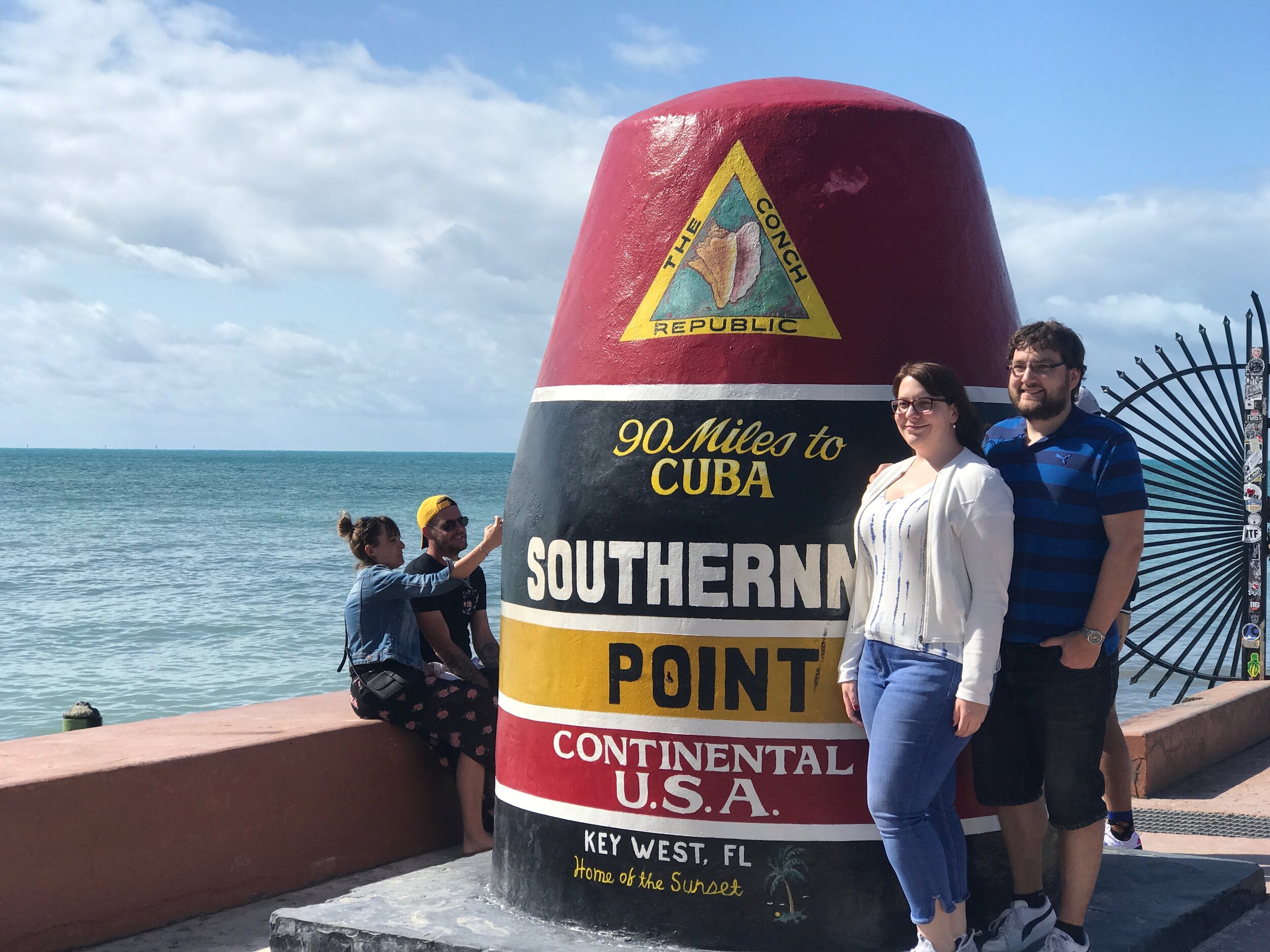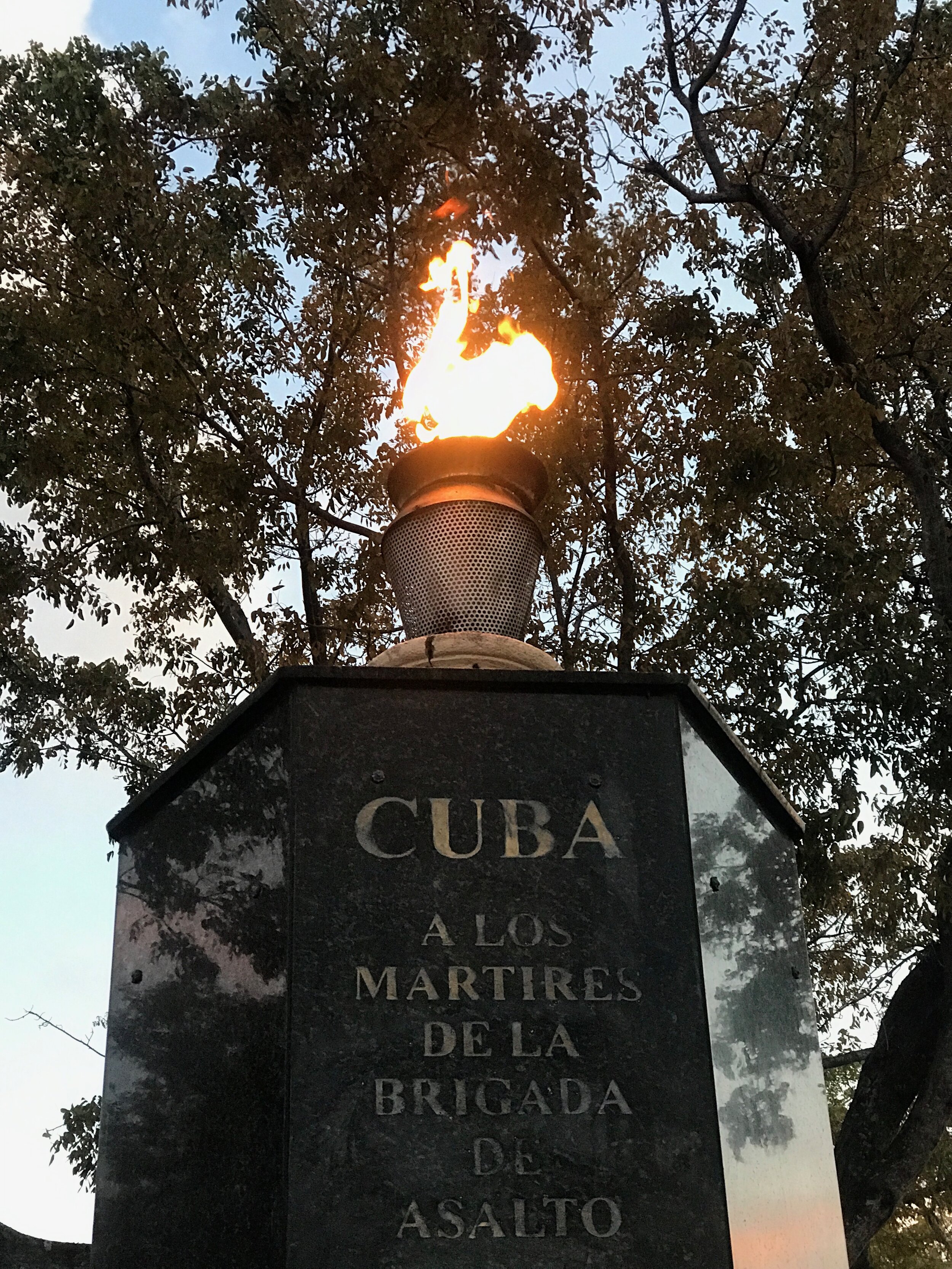The View from Key West
By Rick Holmes
March 13, 2020
Key West, Fla. – The Southernmost Point in the Continental United States, or at least the monument that celebrates it, sits at the corner of South and Whitehead. Almost any time of day you can find tourists at the tiny park, taking photos in front of the brightly-painted monument and gazing out across the water. “90 Miles to Cuba,” the monument proclaims.
On the sidewalk nearby is a poem:
Ninety Miles
Oh, Havana
Coffee-colored dreams of rainy streets
Boys playing with balls
La Playa Santa Maria
If only I could get to you
And your people could come to me
The poem’s author, Jennifer Grafiada, was born many decades after the first wave of Cuban refugees landed in South Florida, but she feels the pain of separation that haunts generations of Cuban Americans. They were cut off from family, friends and homeland, first by revolution, then by geopolitics. Their relatives in Cuba suffered imprisonment at the hands of the Castro regime and impoverishment from the economic embargo imposed by the United States.
Cuba is an emotional wound that lingers on both sides of the Straits of Florida, and it’s one Bernie Sanders bruised again weeks before the Sunshine State’s primary.
In Little Havana, an eternal flame remembers those who fell during the Bay of Pigs invasion in 1961, when a small army of Cuban exiles, recruited and trained by the CIA, tried to inspire an uprising against Fidel Castro’s communist government. The action failed miserably, with more than 100 exiles killed in battle, hundreds more executed by Castro’s firing squads and more than 1,100 held as prisoners.
U.S. involvement in Cuba began long before Castro came to power. U.S. presidents from Thomas Jefferson to U.S. Grant pursued Cuban annexation. In 1898, the U.S. invaded Cuba to kick out the Spanish. American troops occupied Cuba for a decade, and we’ve never given back Guantanamo Bay.
It was Cuba’s part in the Cold War – an ally of the Soviet Union just 90 miles away – that turned our neighbor nations into sworn enemies. Castro seized property owned by U.S. companies, encouraged revolutionary movements in other nations and locked up political opponents. The U.S. responded by cutting off trade and visitation to Cuba, organizing the Bay of Pigs invasion and attempting to assassinate Castro. Nobody in America defended Castro back in those tense days, except for a handful of leftists on campus.
Which is what Sen. Bernie Sanders sounded like when Anderson Cooper of “60 Minutes” asked about his history of defending the Cuban leader. “You know, when Fidel Castro came into office, you know what he did? He had a massive literacy program,” Sanders told Cooper. “Is that a bad thing? Even though Fidel Castro did it?”
Sanders’ comments were beyond tone-deaf. They were the equivalent of the old line that at least Mussolini made the trains run on time. Beyond that, Sanders showed no sign of understanding how Cuban Americans feel about the subject.
There are plenty of things Sanders could say about Cuba without contradicting any of his past criticism of U.S. policy. He could have acknowledged that the U.S. has a long history of interference in Cuban affairs, sometimes as a liberator, sometimes an oppressor and exploiter. He could have recognized the immense suffering caused by Castro’s human rights violations and by the U.S. embargo. He could have promised to forge new bonds between the nations that would help everyone.
But Bernie doesn’t do nuance. He doesn’t search for common ground. He doesn’t use different terms to reframe his ideas for skeptical listeners. He uses the same old ‘60s-vintage terms – “revolution,” “establishment,” “socialism” – that evoke a bull session in a college dorm. Sanders has been talking like this since he first jumped into Vermont politics. To some, it shows an admirable consistency. To others, it’s a sign he hasn’t learned anything.
Things have gotten a little better for Cubans and Cuban Americans. Barack Obama lifted some of the restrictions on travel and financial transactions between the two nations. Appealing to the Cuban American hardliners that have dominated Republican politics in Florida since Nixon’s presidency, Donald Trump promised to rebuild the wall around Cuba. He’s reversed some of Obama’s policies – U.S. cruise ships can no longer stop in Cuba – but there are still flights every day from Miami to Havana.
Cuban American politics are changing as well. Younger Cuban Americans welcomed Obama’s “Cuban thaw,” which restored diplomatic relations. A recent poll found more than half of Cuban Americans age 18 to 44 disapprove of Trump’s performance. Obama won Florida twice before Trump took its electoral votes in 2016. It will be very much in play this November.
Florida is the most politically complicated state in the union. Anyone who hopes to win its votes must have something to say to poor farm workers in the interior north, to wealthy condo owners on the coasts; to service workers in Orlando; to anxious retirees just getting by; to the oystermen and loggers of the Forgotten Coast; to the military enclaves near Tampa; to African-Americans in Jacksonville, Cuban-Americans in Little Havana, Puerto Ricans who surged to the state after Hurricane Maria and Hispanic immigrants from a dozen other countries whose political issues have little in common with the Bay of Pigs generation.
As Sanders should know, connecting with those diverse groups is a test for even the most skilled political communicators.

